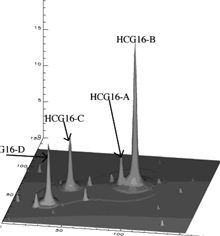
From S. Dos Santos et al. paper

From S. Dos Santos et al. paper
Gus. EVRARD .pdf
( for the summary look ..ps)
BENJAMIN F. MATHIESEN .ps .pdf
I employ an ensemble of hydrodynamical simulations and the XSPEC MEKAL emission model to reproduce observable spectral and flux-weighted temperatures for 24 clusters. Each cluster is imaged at 16 points in its history, which allows the investigation of evolutionary effects on the mass-temperature relation. In the redshfit zero scaling relations, I find no evidence for a correlation between cluster temperatures and their formation epochs out to redshifts of 0.6. This result is is true for both observable and intrinsic intracluster medium temperatures, and implies that standard Press-Schechter theory is sufficient to describe the properties of the local X--ray temperature function.
We present results from a deep Chandra observation towards the MS1137.5+6625 cluster of galaxies. MS1137.5+6625 is a distant (z=0.783), massive cluster of galaxies, which appears relaxed and regular in the X-ray image. With less than a handful of similarly massive clusters currently known at such high redshifts, and this observation provides much needed information on the dynamical state of these rare systems. We discuss the density and temperature structure of the cluster, and compare the X-ray image with a deep optical image and with interferometric Sunyaev-Zel'dovich effect data.
MONIQUE ARNAUD et al. .ps .pdf
We present the first XMM observations of clusters, performed during the commissioning and calibration phases. These data are used to illustrate the capabilities of XMM for poor systems study and to assess the effect of vignetting and background for the determination of temperature profiles in bright clusters.
We discuss new results from the Chandra X-ray Observatory and XMM-Newton on cluster cooling flows, emphasizing early results from our Chandra programs. We find cooling rates reduced by factors of 5--10 compared to those from earlier missions. Nevertheless, substantial amounts of keV gas appear to be cooling and fueling star formation in central dominant cluster galaxies (CDGs). The structure of the keV thermal gas is remarkably complex, particularly in regions surrounding the the radio source and sites of star formation in CDGs. The radio sources are displacing the thermal gas leaving cavities filled with radio emission. The cavities are apparently supported against the local gas pressure by magnetic fields and cosmic rays. In addition, radio-faint, ``ghost'' cavities are seen in some clusters. They may be relics of earlier radio outbursts rising buoyantly in the intracluster medium. The radio sources may reduce the mass deposition rates by mechanical heating, and by inducing convective currents that move cool material outward.
ACIS on board the Chandra Observatory was used to obtain a very deep image of three high redshift galaxy clusters. The results of our preliminary analyses of these data are reported. A fit to the X-ray spectrum of one of the clusters at z=1.26 yields a temperature of 6.8 \pm 2.1 keV, approximately in line with the expectation based on its L_x according to the low redshift$L_x - T_x relation. The very different morphologies of the X-ray emission in this and the other z > 1 cluster are discussed in light of their member galaxy distributions.
YANNIC. MELLIER et al. .ps .pdf
The first detections of cosmic shear signal reported recently by 4 independent groups cover angular scales between one and 10 arcmin. On those scales, the cosmic shear is a signature of non-linear perturbations, like groups and clusters of galaxies. I present the results obtained by our team on CFHT and on the VLT and discuss its impact for the analysis of cluster abundances and cosmology
The Hickson Compact Group 16 is the coldest detected by ROSAT PSPC (Ponman et al. 1996; Dos Santos & Mamon, 1999) and it is a system containing only spiral and active galaxies. With the imaging and spectroscopy data analysis of the EPIC/MOS cameras we detect the diffuse X-ray emission and, thanks to the XMM PSF, we can safely exclude the contribution of galaxies from the spectrum. The MOS spectra of the diffuse gas are in a perfect agreement between each others and lead to a temperature of kT = 0.28 keV constrained in the range [0.26-0.31] keV and an X-ray luminosity of 7 10^{40} ergs s^{-1} in agreement with previous works.
We present recent data on the compact group HCG~62 taken with ACIS-S on Chandra. The sparseness of groups and their relatively simple dynamical history allow the properties of the IGM to be more directly related to galaxy evolution than may be possible in clusters, and their lower gas temperatures produce strong lines from a broader range of elements than is the case in hotter clusters. Our goals with this observation were to exploit the high X-ray brightness of HCG~62 to determine accurately the abundances of heavy elements as a function of position in the group, to test whether abundance variations are associated with individual galaxies, and to trace the origin of the enrichment. The Chandra image reveals an unanticipated, complex spatial structure, in particular two ``cavities'' of approximately 20~kpc extent placed almost symmetrically on opposite sides of the X-ray peak.